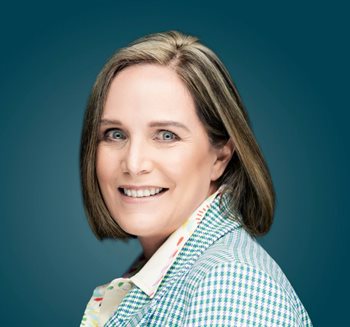
Deirdre King, managing director at Jacaranda FM
Screen time as an issue has been around since the digital age, but screen fatigue is gaining serious momentum and if you look at the techniques shared to combat Computer Vision Syndrome (CVS), there is no doubt that screen-based advertising is being impacted.
Could screen fatigue be behind the rapid adoption of additional audio products offered by the radio sector?
An Infinite Dial Survey comparing digital audio listenership from 2019 to 2021 in South Africa shows that the monthly online audio audience grew by 33% and that monthly podcast listenership is up by 16%. We asked our Jacaranda FM audience about their radio/audio consumption in relation to screen fatigue and the sentiments were very interesting.
Dry or red eyes was the symptom most perceived from screen fatigue by 45%, and 47% take regular breaks to combat this effect.
Since experiencing screen fatigue, 68% of respondents say they listen to radio more, and 62% would prefer to listen to content in their native langue if the audio content was available. Earlier this year I shared my sentiments on cross-cultural audio content and how we are going to see massive boom in the next few years.
Although screen fatigue or CVS is very real, radio as a medium for advertisers is growing the different audio touchpoints for brands and cementing its place in the marketing mix because of other factors as well.
Consumer trust
Radio is still such a trusted channel because of the accurate news shared, say 41% of respondents; 22% say it’s because of the informed presenters, and 22% believe it’s because of the consistency of the presenter teams for each show. Radio is also the first port of call when a disaster strikes as listeners tune in for the latest current affairs updates and news reports. Whichever way you slice it, the trust barometer for radio is at an all-time high.
Mass intimacy
A gogo in the rural community can be listening to the exact same message on her ‘wireless’ as a Sandtonite streaming their favourite show though their smart home speakers. As a democratised medium, radio doesn’t just reach South Africans from all walks of life collectively – but engages each audience member intimately without prejudice or favour.
Tra-digital power
Combining traditional airwaves with modern technology allows radio to reinforce the audio experience with a layer of visual content. Underpinning the broadcast with digital touchpoints feels more integrated and more considered to the audience. When you hear your favourite radio personality endorse a promotion, and that campaign is seamlessly integrated into your social channels, its allows consumers to use their imagination, ears, sight, and touch to create a memorable brand experience.
Real-time business intelligence and impact
Radio allows you to monitor and analyse each audience segmentation and provides real-time numbers on engagement. For Valentine’s Day this year, Martin Bester and Breakfast Team created a ticketed event to give couples the chance to experience a real-life concert for the first time since lockdown. The campaign went live on air, the Jacaranda FM website and social media channels – within 20 minutes, the tickets were sold out!
Due to high demand the marketing team spoke to the venue to release another 100 tickets and shockingly, those thickets were sold out within 10 minutes. All it took was 30 minutes for a concert to sell out using radio as the main communication vehicle.
The power of radio is so intimate and immediate – the direct consumer engagement or action is distinct and tangible – with the right product, at the right time, radio is a powerful tool in campaign delivery to consumers.
Agile impressions for less
If you have a great idea, radio can translate that idea into audio content almost immediately, schedule it quickly, help you create your campaign, and do all this for much less than a TV advert and without the lead-time of print.
Even as TV becomes more competitively priced, radio has expanded its audio offering from on-air promotions tied to activations or events, to an entire ecosystem of supplementary audio products such as audio on demand (AOD), podcasting, virtual reality plug-ins and events, and pop-up radio stations themed to fit the content.
Influence without the influencer campaign
Influencers and their effectiveness have been debated for some time now and whatever your belief, media personalities have generated influence and clout for years. Radio allows you to tap into the influence each radio host has over their audience by simply scheduling your content for their segment. You can go even further and have a specific personality endorse your message or be ‘cool by association’ by simply booking your slot in their show.
According to BizCommunity, 23 million people tune into radio every day in Mzansi. That’s 23 million opportunities to serve an engaged audience creative and thought proving content, with the added benefit of having your content endorsed by a popular radio host/ influencer.
Call to action
Get the call to action and timing right, and you could have a sold-out concert in 30 minutes. Radio advertising or content requires a strong call to action. We have limited time and attention to capture, and radio gives the audience a stake in the ground on which to act. The clear and concise nature of radio gives consumers just the right amount of info without overwhelming them.
Radio is the only broadcast medium you can listen to at the flick of a single switch in the shower, kitchen, car, home, work, and mall. Yes, screen fatigue has impacted the growth of radio in recent years, but radio’s efficacy in the marketing mix is more than the sum of its parts and the entire radio ecosystem can’t be ignored by markers who want authentic connections between their brands and consumers.
